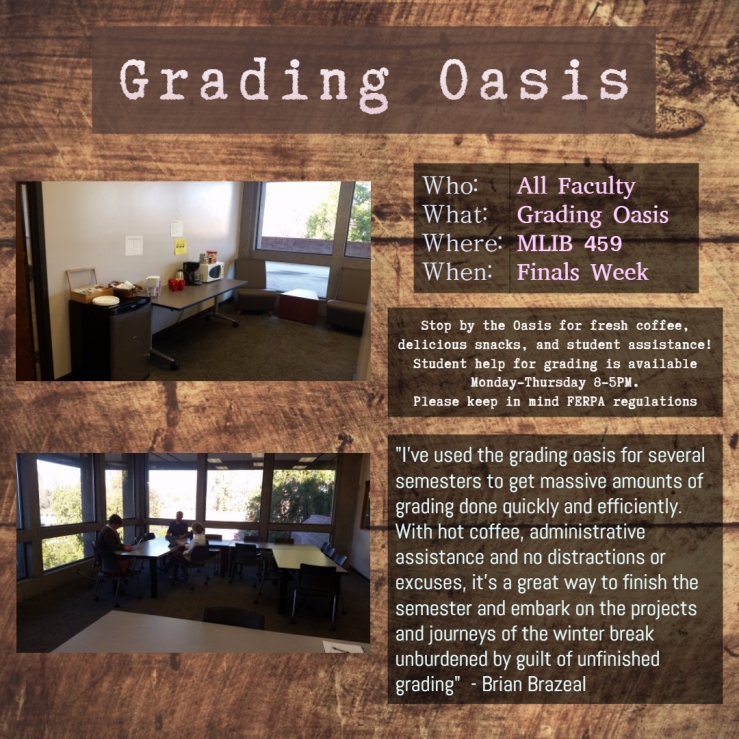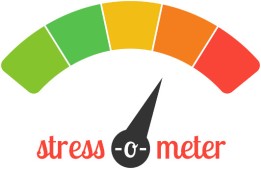Welcome to the second week of the semester!
As students settle into the rhythm of their courses they will also be settling into old patterns. You have the opportunity to intervene and many of you do by highlighting the behavior of historically successful students. Maybe your course is supported by Supplemental Instruction through the Student Learning Center and you know if they go regularly, they will probably pass. Maybe your course uses online videos and you know students who watch in advance of the class always do better. Sharing this information with students is almost always appreciated and can lead to student success, but it is our responsibility to make sure we are sharing the right information. When I taught the public speaking course I assumed the students who failed were getting low speech grades. It was actually much more common that if they were failing they were missing the weekly quizzes. This information changed the advice I gave students and how I trained my Teaching Associates.
In light of that, I have homework for you. Go back through grades from one or two semesters to look at some landmark assignments like the first exam or project. Even if you are not fluent in statistics you can probably draw some conclusions about early success and overall performance in the course. You may find similar markers like attendance or one of the things mentioned earlier. You may be quite surprised. I am urging you to be intentional about it rather than relying on assumptions. This will start to give you markers for when students are headed for trouble. In some other Universities, like Georgia State, they have used information like this to radically improve student performance. In my conversations with colleagues around campus they are often surprised to learn the number of students who fail their courses or that there is an achievement gap between Under Represented Minority students and non-Under Represented Minority students. We can only unravel these dynamics when we pay attention to why students do well and why they don’t and then fashion solutions. Most of us share advice at the beginning of the semester about how to do well and when students are headed for trouble, let’s be sure we are giving the right advice.
Digging into these dynamics can require help from Institutional Research, your Assessment Coordinator, or a colleague, but it is almost always worth it.
Dr. Sara Cooper has provided additional Book in Common Material. Check out this section of the CELT page for regular synopsis updates, discussion questions, and other resources.
Got feedback on this tip? Got an idea for a tip? Send it along. Check out our new and improved wordpress site here.
Don’t forget to subscribe to the Caffeinated Cats podcast! Our fourth episode of the Fall is out now! Mary, Tracy, and I discuss the election with Juni Banerjee-Stevens and Mike Pence (not really, just checking to see if you were still reading). Link to it on soundcloud, itunes, overcast, or follow the podcast on facebook.




 Two years ago was an exciting time in my life. My wife was pregnant with our first child, I had turned in my dossier for tenure and promotion a month earlier and everything seemed to be happening at once. Much of the semester was a fog for me, but I do distinctly remember going to my public speaking course at this time in the semester, looking at the faces, and asking myself “who are these people?” The format of the class did not lend itself well to developing relationships with the students so I had never made it a priority, but in Fall 2014 I was especially distant. It was impossible to get to know 500 students, most of which watched online and I would never meet, so I made the mistake of not getting to know any of them. The problem with that thinking was, I ended up missing out and in turn, so did they. Getting to know your students is a frequent refrain of mine, but a recent
Two years ago was an exciting time in my life. My wife was pregnant with our first child, I had turned in my dossier for tenure and promotion a month earlier and everything seemed to be happening at once. Much of the semester was a fog for me, but I do distinctly remember going to my public speaking course at this time in the semester, looking at the faces, and asking myself “who are these people?” The format of the class did not lend itself well to developing relationships with the students so I had never made it a priority, but in Fall 2014 I was especially distant. It was impossible to get to know 500 students, most of which watched online and I would never meet, so I made the mistake of not getting to know any of them. The problem with that thinking was, I ended up missing out and in turn, so did they. Getting to know your students is a frequent refrain of mine, but a recent 



 tress seems everywhere this time of the semester. The academic year is close to an end which means student concerns about grades and graduation, too many meetings crammed into the day, celebrations that sometimes feel like obligations, and this year we are all making sense of the strike and what it might mean for ourselves and our students. Speaking of students, the stress of the end of the year can be even greater for them as they deal with a host of transitions many of us moved on from years ago.
tress seems everywhere this time of the semester. The academic year is close to an end which means student concerns about grades and graduation, too many meetings crammed into the day, celebrations that sometimes feel like obligations, and this year we are all making sense of the strike and what it might mean for ourselves and our students. Speaking of students, the stress of the end of the year can be even greater for them as they deal with a host of transitions many of us moved on from years ago.